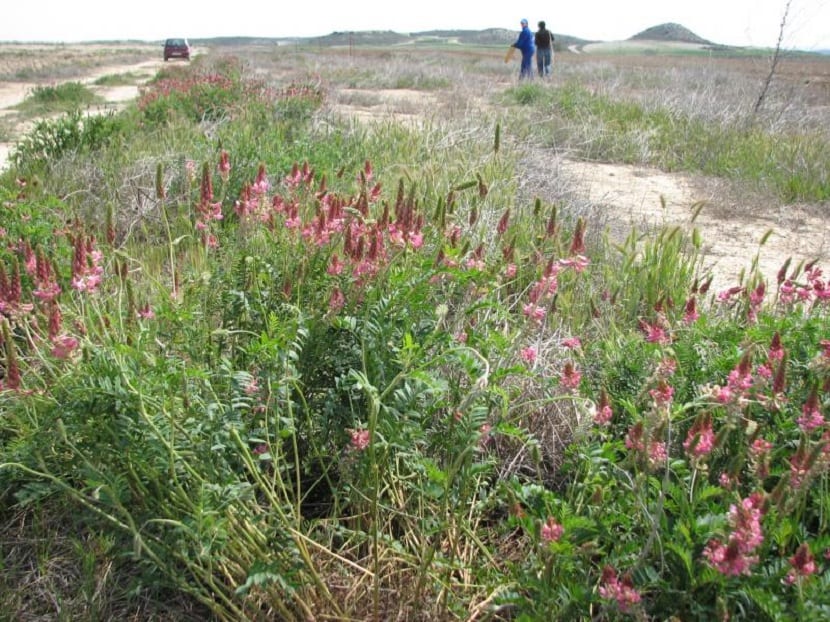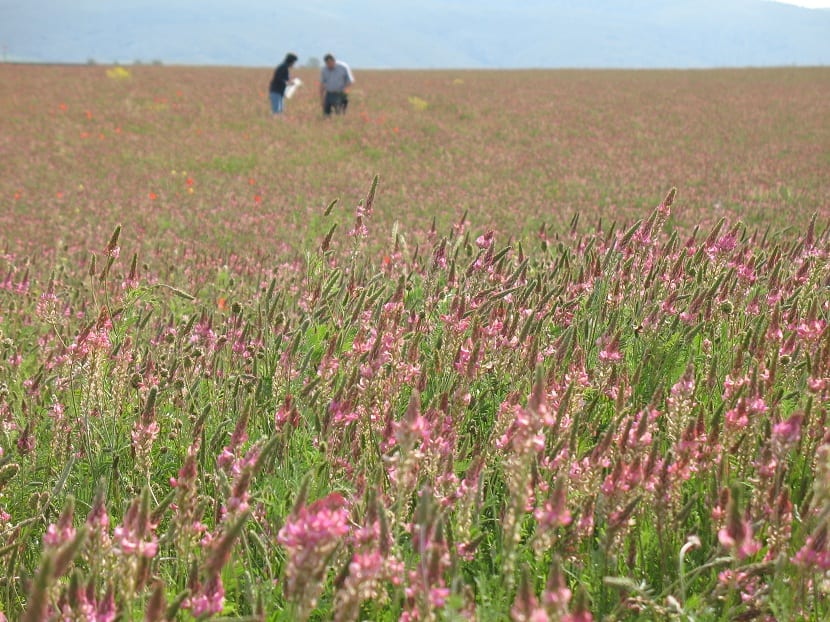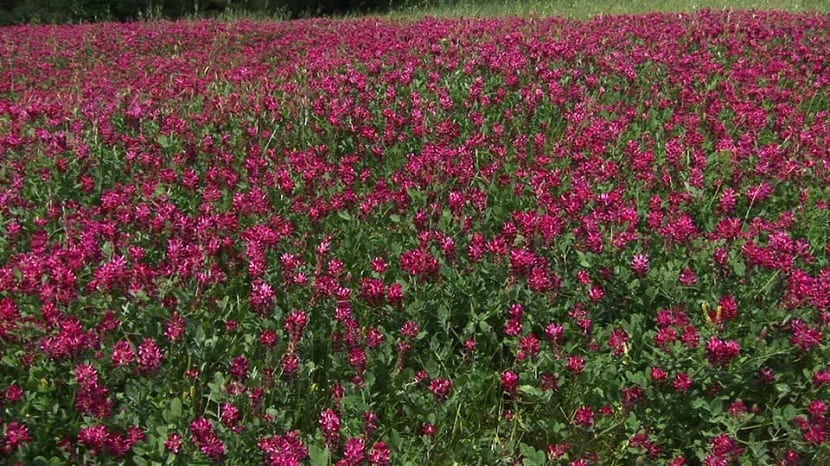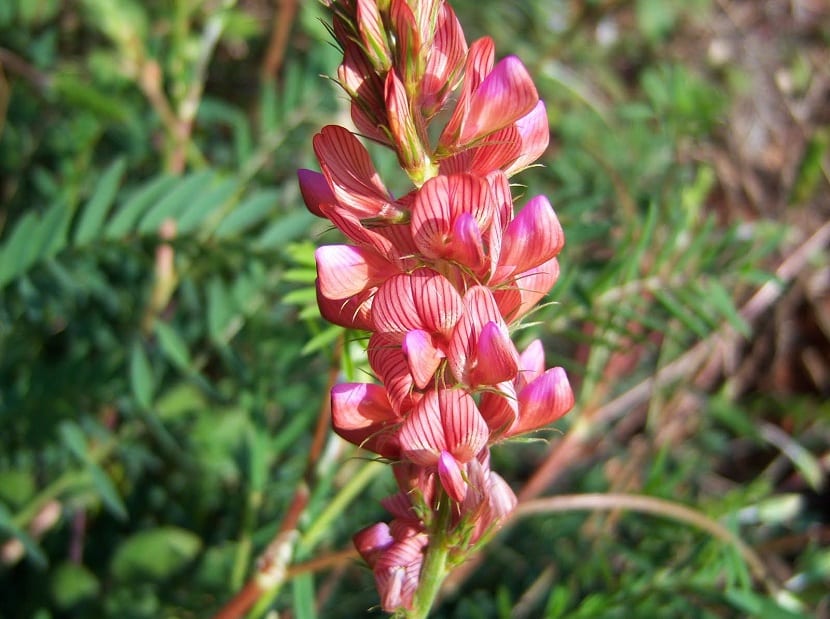
Today we come to talk about a type of plant belonging to the legume family. Is about the sainfoin. It is also known as pipirigallo. Its scientific name is Onobrychis viciifolia and it is a legume with a multiannual forage and quite rustic. In general, it is adapted to the limestone soils of the driest and coldest regions of our peninsula.
If you want to know more about the characteristics and cultivation of sainfoin, this is your post.
Key features

The sainfoin has a great productive capacity and hardly produces impacts on livestock when it is consumed. It is a plant native to the Rhine Valley where, at the end of the XNUMXth century, it was discovered the great capacity it has for its agronomic properties.
It has great qualities, among which we find a forage that adapts to not very fertile, limestone and dry soils. The only condition for this to be the case is that they must remain at altitudes above 600 meters. It is very important that the soil is not flooded since the plant can die directly. We will emphasize this later when we talk about the necessary care.
The majority of sainfoin production takes place in the spring time. Two-thirds of its production is mainly used for haymaking. The other third is used for grazing work in the autumn and winter period. One of the advantages of this plant for its use is that it remains always green, thanks to its ability to grow with daytime temperatures.
The ideal temperature for this type of plant is 20 degrees during the day and up to 0 degrees at night. Because the plant does not tolerate overgrazing, it must be done with considerable caution.
Another of its main characteristics is that it is a plant that regenerates soil fertility very well. It is quite efficient at fixing atmospheric nitrogen and has a root that favors the incorporation of organic matter in the lower levels. It is a good option to use it as an alternative in cereal rotation crops to improve soil fertility and for parasites and weeds to attack.
Properties of sainfoin

Its forage has high nutritional properties. Its highest content is that of protein, although it is somewhat lower than that of alfalfa. Before, the use of sainfoin was recommended to feed chickens and pigeons as it encouraged them to lay more eggs.
These nutritional and production qualities mean that sainfoin can be considered an important rainfed crop as a complement or substitute for alfalfa. However, since they also have different properties, harvesting is not done in the same way. Both have the same annual production. The advantage of the sainfoin is that it has the majority of the production in a single cut. This makes it recommended for hay or dehydration.
As we have mentioned before, the sainfoin is a crop that needs to be at altitudes below 600 meters of altitude. Alfalfa, on the other hand, can be sown at any altitude. This generates some territorial and production advantages. It can also be seen that alfalfa can last up to 12 years as a rainfed crop, while sainfoin only 6.
Cultivation and tillage tasks of the sainfoin

When it comes to cultivating this plant, it is necessary to carry out previous tasks common to almost all legumes. It Must be done a roll or roller pass so that the best contact of the seeds with the ground is favored. In this way we will be enhancing the amount of seeds that germinate and that will finally sprout and develop. In addition, this tillage allows the crop to better maintain soil moisture for a longer time and facilitate its mowing on stony soils.
It can also be sown with the cereal seeder. One of the advantages of planting sainfoin to feed cattle is that it does not cause bloating in cattle (a swelling of the stomach during the grazing process).
After sowing, it germinates during the first year but hardly grows enough. For this reason, in the past it was sown next to a cereal so that it became the first harvest of the year. If you want to use it as green manure, it must be mowed just before flowering or shortly after if we are going to use it as fodder. The first harvest is made between the months of May to June. If the rainfall is abundant, a second more harvest can be carried out.
The advantage of sowing sainfoin is that it does not "tire" the soil. That is, there are crops with high nutritional requirements, fertilizers, fertilizers, herbicides, etc. That oversaturate the soil and make them lose properties. This occurs because the nutritional demand is greater than the rate of regeneration of the soil after exploitation. This does not happen to sainfoin as it does not require large nutritional concentrations.
For all these reasons, when the sainfoin crop is harvested, it can be re-sown on itself.
Exploitation

This plant has a good forage and by not causing meteorism in ruminant animals, it is possible to save on the consumption of straw. In general, alfalfa has a forage that does create that swelling in the belly of grazing animals. To alleviate this problem, what is done is to mix it with straw to alleviate that swelling. This does not happen with the sainfoin.
In addition to everything seen so far, the sainfoin gives us a highly appreciated monofloral honey and has served as fodder for sheep, horses and even rabbits. Until now, the best combination for the use of this plant is grazing and mowing.
As you can see, this plant is widely used in the agricultural field for its utility and versatility when it comes to use. If you have livestock and you want to feed them healthily without them suffering from meteorism, plant safflower so that this problem does not reappear.